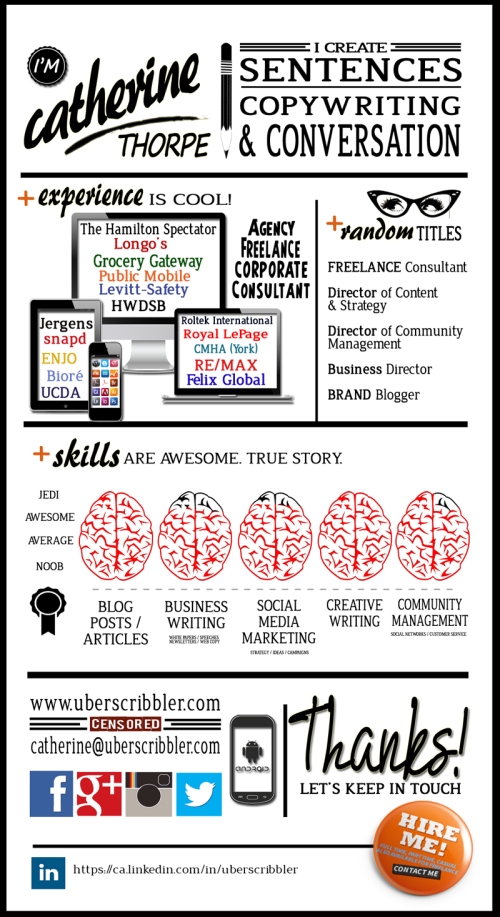 Magazines were the original social networks. They filled a void for otherwise isolated individuals and the content transported them outside their community. Brands promoted their products through this early network with static advertising placement that shouted “LOOK AT ME. BUY ME. LOVE ME.”
Magazines were the original social networks. They filled a void for otherwise isolated individuals and the content transported them outside their community. Brands promoted their products through this early network with static advertising placement that shouted “LOOK AT ME. BUY ME. LOVE ME.”
Early television formats featured someone standing motionless at a microphone telling stories. Much like the technology evolution from radio to television, this print to digital content evolution has left folks standing around delivering static content in a dynamic environment. Technology changes faster than corporate mindset.
Thankfully, the gap is starting to close and we’re seeing Brands and marketers leading with diversity in content innovation.
Social networks are about sharing. It’s important to understand the distinction between sharing, and being shared with. Value, not persuasion, is the core of the social sharing ecosystem. Content must be dynamic not static—put the microphone down and put on your dancing shoes.
As a brand, providing value in content is about storytelling. Storytelling is a long-standing tradition at the heart of all families, communities and cultures. Effective and dynamic story-telling develops deeper, emotional connections that allow readers to be a big part of the experience.
So, how do you tell an effective story?
Imagine your brand as a big book of stories. Each story must have your brands corporate message baked in (not obvious posturing), it must be relevant, timely, provide value, allow for consumer interaction, and be engaging. You want your audience to turn the page and read the next story, don’t you?
 With that in mind, let’s use Coca-Cola’s 70/20/10 content rule. 70% of your stories should be the low-risk, solid useful content your audience expects—appealing to all audiences. 20% of your stories should be higher-risk, solid useful content that is directed to specific segments of your audience—your loyal consumers. The last 10% of your stories are where you can set your hair on fire. It’s the content that reaches out to the edges, or comes at your idea in an entirely new way. Your audience might not be there yet or they might be right there with you. It’s the crazy, never-been-done-before-and-might-fail ideas. This is high-risk, but it has the potential to achieve the highest share rate and is also where your future 70-20% will come from.
With that in mind, let’s use Coca-Cola’s 70/20/10 content rule. 70% of your stories should be the low-risk, solid useful content your audience expects—appealing to all audiences. 20% of your stories should be higher-risk, solid useful content that is directed to specific segments of your audience—your loyal consumers. The last 10% of your stories are where you can set your hair on fire. It’s the content that reaches out to the edges, or comes at your idea in an entirely new way. Your audience might not be there yet or they might be right there with you. It’s the crazy, never-been-done-before-and-might-fail ideas. This is high-risk, but it has the potential to achieve the highest share rate and is also where your future 70-20% will come from.
Ultimately, content innovation is driven by the combination of old ideas and new configurations. Readers don’t want to be told information in a static one-way drop. They want to have a conversation about the information, be swept away into the information, they want to be affected and share that information within their own social circles.
Brand stories should be a distribution of creativity with a content excellence that would make a ruthless editor weep tears of joy. You want to be dramatically different—not just noise in the digital airwaves. But how many different ways can you do it? The possibilities are endless!
 A good example of a Brand leading their story through innovation is the grocery retail chain, Longo’s. They are telling you their brand story—quite literally. They are exercising their 10% and pioneering into new content configuration frontiers. They are bringing journalistic blogging together with traditional publishing techniques for a compelling story that is fun, engaging, and worth the attention of their audience.
A good example of a Brand leading their story through innovation is the grocery retail chain, Longo’s. They are telling you their brand story—quite literally. They are exercising their 10% and pioneering into new content configuration frontiers. They are bringing journalistic blogging together with traditional publishing techniques for a compelling story that is fun, engaging, and worth the attention of their audience.
And hey, it can even be plopped into my e-reader with RSS.
This is an idea of brand storytelling through actual storytelling. Check out Longo’s creative non-fiction brand story here.



 The success of any social media program is irrevocably tied to the initial expectations of the program. What did you think was going to happen?
The success of any social media program is irrevocably tied to the initial expectations of the program. What did you think was going to happen? Magazines were the original social networks. They filled a void for otherwise isolated individuals and the content transported them outside their community. Brands promoted their products through this early network with static advertising placement that shouted “LOOK AT ME. BUY ME. LOVE ME.”
Magazines were the original social networks. They filled a void for otherwise isolated individuals and the content transported them outside their community. Brands promoted their products through this early network with static advertising placement that shouted “LOOK AT ME. BUY ME. LOVE ME.” With that in mind, let’s use Coca-Cola’s 70/20/10 content rule. 70% of your stories should be the low-risk, solid useful content your audience expects—appealing to all audiences. 20% of your stories should be higher-risk, solid useful content that is directed to specific segments of your audience—your loyal consumers. The last 10% of your stories are where you can set your hair on fire. It’s the content that reaches out to the edges, or comes at your idea in an entirely new way. Your audience might not be there yet or they might be right there with you. It’s the crazy, never-been-done-before-and-might-fail ideas. This is high-risk, but it has the potential to achieve the highest share rate and is also where your future 70-20% will come from.
With that in mind, let’s use Coca-Cola’s 70/20/10 content rule. 70% of your stories should be the low-risk, solid useful content your audience expects—appealing to all audiences. 20% of your stories should be higher-risk, solid useful content that is directed to specific segments of your audience—your loyal consumers. The last 10% of your stories are where you can set your hair on fire. It’s the content that reaches out to the edges, or comes at your idea in an entirely new way. Your audience might not be there yet or they might be right there with you. It’s the crazy, never-been-done-before-and-might-fail ideas. This is high-risk, but it has the potential to achieve the highest share rate and is also where your future 70-20% will come from. A good example of a Brand leading their story through innovation is the grocery retail chain, Longo’s. They are telling you their brand story—quite literally. They are exercising their 10% and pioneering into new content configuration frontiers. They are bringing journalistic blogging together with traditional publishing techniques for a compelling story that is fun, engaging, and worth the attention of their audience.
A good example of a Brand leading their story through innovation is the grocery retail chain, Longo’s. They are telling you their brand story—quite literally. They are exercising their 10% and pioneering into new content configuration frontiers. They are bringing journalistic blogging together with traditional publishing techniques for a compelling story that is fun, engaging, and worth the attention of their audience. Net policy or social media policy? I hear both of these terms being thrown about as if they were interchangeable. There is a difference. There should be a difference. The main distinction is the focus on what employees can do in the web world, rather than what they can’t. An internet policy typically outlines employee internet use during work hours—and consequently the monitoring of that use. A social media policy governs the individual interactions of your employees in the social sphere—as it relates to your brand—and can be much harder to monitor once an employee has clocked out and is operating in their own time.
Net policy or social media policy? I hear both of these terms being thrown about as if they were interchangeable. There is a difference. There should be a difference. The main distinction is the focus on what employees can do in the web world, rather than what they can’t. An internet policy typically outlines employee internet use during work hours—and consequently the monitoring of that use. A social media policy governs the individual interactions of your employees in the social sphere—as it relates to your brand—and can be much harder to monitor once an employee has clocked out and is operating in their own time. their systems and processes and find something that might work for them. My instinctual response is to lie—and lie big. However, the short answer is that you have to figure it out for yourself. The long answer illustrates a chaos that is not for the faint of heart. I may be a bit old-school in my setup, but there is a generous helping of new-school.
their systems and processes and find something that might work for them. My instinctual response is to lie—and lie big. However, the short answer is that you have to figure it out for yourself. The long answer illustrates a chaos that is not for the faint of heart. I may be a bit old-school in my setup, but there is a generous helping of new-school.  I defied nothing at all.
I defied nothing at all. In this business, we writers watch each other very carefully. We keep an especially twitchy eye trained on those corporate staff writers with their pages of accolades. It’s not their fault. The collective ego of society convinces us that there is value in those accolades. They need it to have value. But the new generation is on to them. They’re bored with them. The slow-acceptance of these primitive thinking newspaper executives allows them to keep ramming their ‘glory days’ references up our wazoos. They tote by-lines noting decades of combined newspaper writing experience—like that means something now. It doesn’t. There is no edge there. It’s just old news.
In this business, we writers watch each other very carefully. We keep an especially twitchy eye trained on those corporate staff writers with their pages of accolades. It’s not their fault. The collective ego of society convinces us that there is value in those accolades. They need it to have value. But the new generation is on to them. They’re bored with them. The slow-acceptance of these primitive thinking newspaper executives allows them to keep ramming their ‘glory days’ references up our wazoos. They tote by-lines noting decades of combined newspaper writing experience—like that means something now. It doesn’t. There is no edge there. It’s just old news. Documentaries are gaining immense notoriety these days. Even my local video store has taken the time to negotiate documentary titles out of the genre muck and onto their own special rack.
Documentaries are gaining immense notoriety these days. Even my local video store has taken the time to negotiate documentary titles out of the genre muck and onto their own special rack. 
